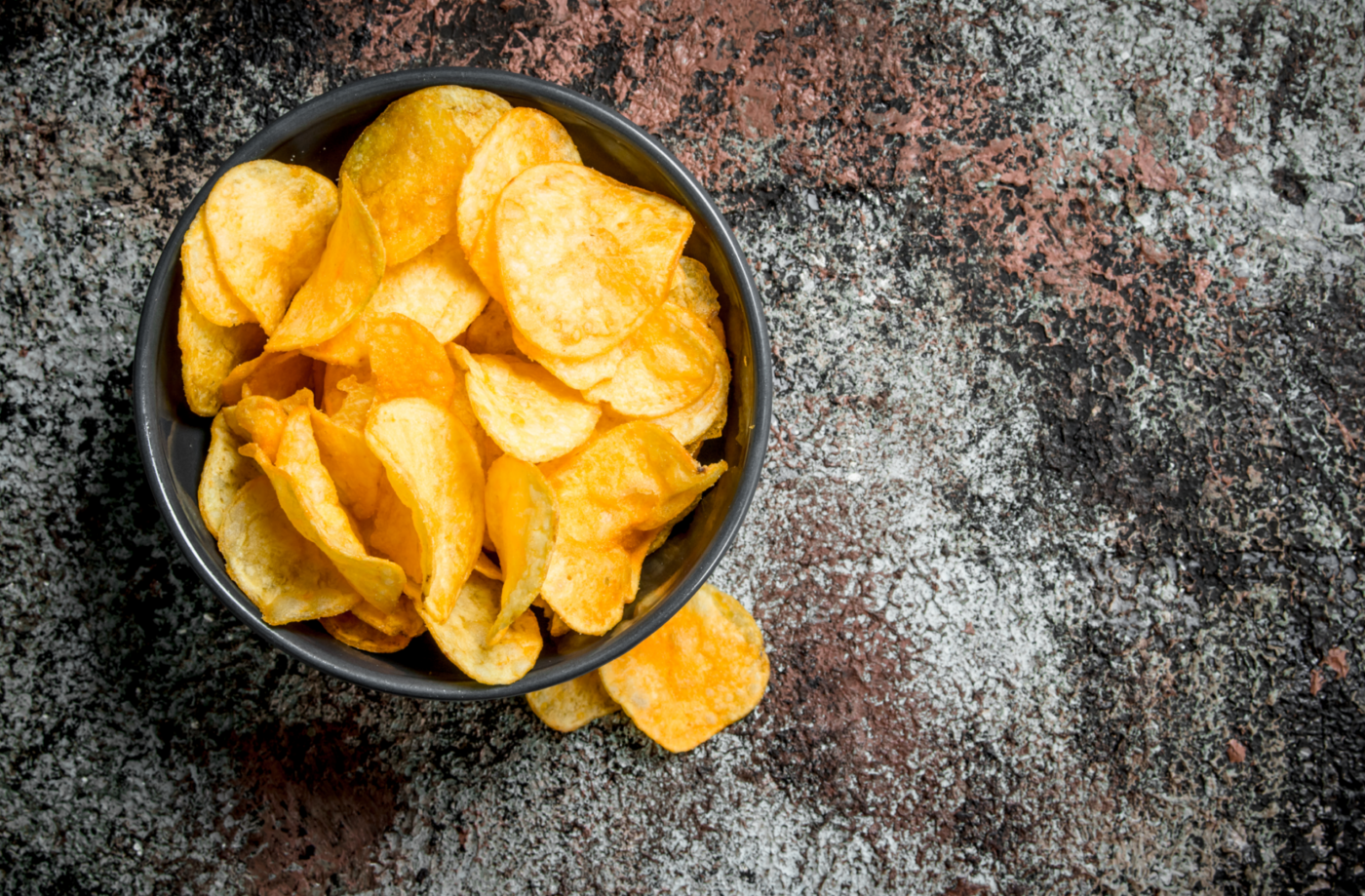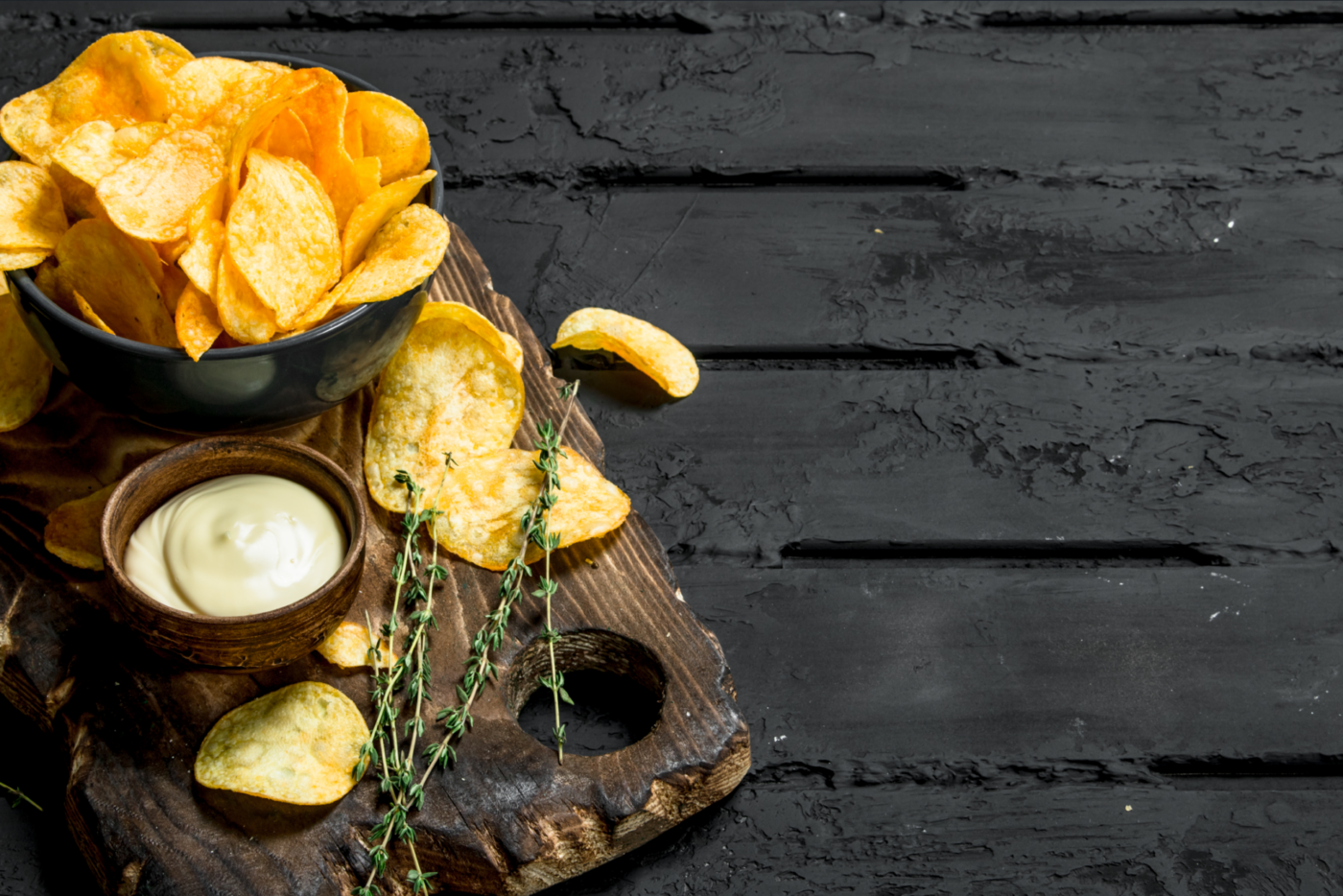Read More: Nutritional Information on Potato Chips
The Basics: Calories, Fat, Carbohydrates, and Protein
The primary components of any food’s nutritional profile are its macronutrients: carbohydrates, fats, and protein. These provide the body with energy and are essential for various bodily functions. Potato chips, being primarily made from potatoes and cooked in oil, are a significant source of both carbohydrates and fat, and consequently, calories.
- Calories: Potato chips are relatively calorie-dense, meaning they pack a lot of calories into a small serving size. The exact calorie content can vary depending on the brand, flavor, and cooking method, but a typical serving of plain potato chips (about 1 ounce or 15-20 chips) contains around 150-160 calories.
- Fat: Fat is the most significant contributor to the calorie content of potato chips. Most traditional potato chips are fried in oil, which adds a considerable amount of fat. A typical serving can contain around 9-10 grams of fat, which can include saturated, monounsaturated, and polyunsaturated fats. The type of oil used in frying can influence the fat profile. In recent years, some brands have started offering chips cooked in healthier oils, like avocado oil or olive oil.
- Carbohydrates: Potato chips are a source of carbohydrates, primarily from the potatoes themselves. A typical serving contains about 14-16 grams of carbohydrates. Most of these carbohydrates are in the form of starch, with a small amount of dietary fiber.
- Protein: Potato chips are not a significant source of protein. A typical serving usually contains only about 1-2 grams of protein.
The Sodium Factor: A Salty Situation
One of the most significant nutritional concerns surrounding potato chips is their high sodium content. Salt is a common ingredient in potato chips, added both during the cooking process and as a surface seasoning to enhance flavor.
- High Sodium Content: A typical serving of potato chips can contain anywhere from 100-200 milligrams of sodium, or even more for certain flavors. Some heavily seasoned or flavored varieties can contain significantly higher amounts.
- Health Implications: Consuming excessive amounts of sodium can contribute to high blood pressure, a major risk factor for heart disease and stroke. The American Heart Association recommends limiting sodium intake to less than 2,300 milligrams per day, with an ideal limit of no more than 1,500 milligrams per day for most adults.
Vitamins and Minerals: A Limited Contribution
While potatoes themselves contain some vitamins and minerals, the processing and frying involved in making potato chips can diminish their content.
- Potassium: Potatoes are a good source of potassium, an electrolyte that plays a crucial role in regulating fluid balance, muscle contractions, and nerve signals. Some of the potassium from the potatoes may be retained in potato chips, but the amount is usually not substantial.
- Vitamin C: Potatoes also contain vitamin C, an antioxidant that supports immune function and collagen synthesis. However, the high heat of frying can degrade vitamin C, so potato chips are not a reliable source of this vitamin.
- Other Vitamins and Minerals: Potato chips may contain trace amounts of other vitamins and minerals, such as vitamin B6, magnesium, and phosphorus, but they are not considered a significant source.
The Impact of Cooking Methods: Frying vs. Baking vs. Air-Frying
The way potato chips are cooked can significantly affect their nutritional profile, particularly their fat and calorie content.
- Traditional Frying: The most common method for cooking potato chips is deep-frying in oil. This method results in a crispy texture but also adds a significant amount of fat and calories.
- Baked Chips: Baked potato chips are often marketed as a healthier alternative to fried chips. They are typically lower in fat and calories because they are not submerged in oil during cooking. However, they may still contain added oils and seasonings.
- Kettle-Cooked: These chips are made in batches, cooked in a large kettle. They are usually thicker and have a harder bite. Their nutrition is similar to traditionally fried chips.
- Air-Fried Chips: Air-frying has gained popularity as a way to create crispy foods with less oil. While air-fried potato chips can be lower in fat and calories than traditionally fried chips, they still contain fat from added oils and may not be as nutrient-rich as other snacks.
Flavorings and Additives: A Source of Added Sugars, Sodium, and Artificial Ingredients
The vast array of potato chip flavors available today often comes with added ingredients that can impact their nutritional value.
- Added Sugars: Some flavored potato chips, such as barbecue or honey mustard, may contain added sugars, which contribute to the overall calorie and carbohydrate content.
- Artificial Flavors and Colors: Many flavored potato chips contain artificial flavors, colors, and other additives. While these are generally recognized as safe in small amounts, some individuals may prefer to avoid them.
- MSG (Monosodium Glutamate): Some potato chips may contain MSG, a flavor enhancer that can cause adverse reactions in sensitive individuals.
Portion Control: A Key Consideration
Regardless of the type or flavor of potato chips, portion control is crucial. It’s easy to overconsume potato chips due to their addictive nature, and a small handful can quickly turn into a large portion, significantly increasing your intake of calories, fat, and sodium.
Healthier Alternatives: Exploring Other Snack Options
While potato chips can be enjoyed in moderation, there are many other healthier snack options that provide a wider range of nutrients and fewer drawbacks:
- Fresh Fruits and Vegetables: Offer vitamins, minerals, fiber, and antioxidants.
- Nuts and Seeds: Provide healthy fats, protein, and fiber.
- Whole-Grain Crackers or Popcorn: Offer more fiber than potato chips.
- Yogurt: A good source of protein and calcium.
Conclusion: Enjoy in Moderation
Potato chips are a beloved snack for a reason – they’re crispy, salty, and undeniably satisfying. However, their nutritional profile, particularly their high fat, calorie, and sodium content, warrants moderation. They are not a good source of essential nutrients and should not be relied upon as a regular part of a healthy diet. By understanding the nutritional information on potato chips, choosing healthier cooking methods or varieties when possible, practicing portion control, and balancing their consumption with more nutrient-rich foods, you can still enjoy this classic snack without significantly compromising your overall health goals. Remember that variety and moderation are key to any healthy eating plan.




Share
Click on the icons below to share "Title of the item to share"